This week, a useful tip on handling potato gnocchi that you’ve cooked and frozen.
Some years ago, I got the idea that ravioli, tortelli or other filled pasta could be cooked like potsticker dumplings (guotie in Chinese, gyoza in Japanese). That means arranging them (either freshly made or frozen) in a non-stick frying pan slicked with oil, adding a little water (or on rare occasions stock), covering the pan, cooking until the dumplings have cooked through in the liquid and its steam, then finally removing the lid and browning their bottom surfaces in the oil that remains once the liquid has boiled off.
This came about because I’d carelessly made a batch of tortelli that I feared would split and leak if subjected to the hurly-burly of simmering water. But since in the potsticker technique they lie motionless in the pan, the most delicate foods will survive intact. And the outcome is so delicious that we’ve eaten potstickerized non-Asian dumplings many times since, even sturdy ones that didn’t need coddling.
The other day Jackie and I made too many potato gnocchi for our dinner. As one does. Gnocchi are fragile by nature, though we like them a trifle denser than hard-line advocates of the cloudlike gnocco would allow. Extras are best frozen already cooked – laid out on a parchment-paper-lined tray in the freezer, then transferred to a plastic bag when hard. When it’s time to eat them, simply tossing them, frozen, into boiling water is risky: they can sometimes fray around the edges or, in worst cases, disintegrate. It seemed time to try the gentle potsticker method on something other than stuffed pasta, and that’s what I did, exactly as described above with the single difference that I turned the gnocchi over once they’d lightly browned and got them crisp on the second side. (I used olive oil in this case, and plain water for the liquid.)
We ate them with braised short ribs of beef and, more important, their sauce, though they’d lend themselves to any dish in which gnocchi can play a central or peripheral role, even a delicate one: this method does not denature the gnocchi. If anything, the browning (which can be as light or dark as you choose) seems to heighten the potato flavor, which is what we seek in any gnocchi preparation.
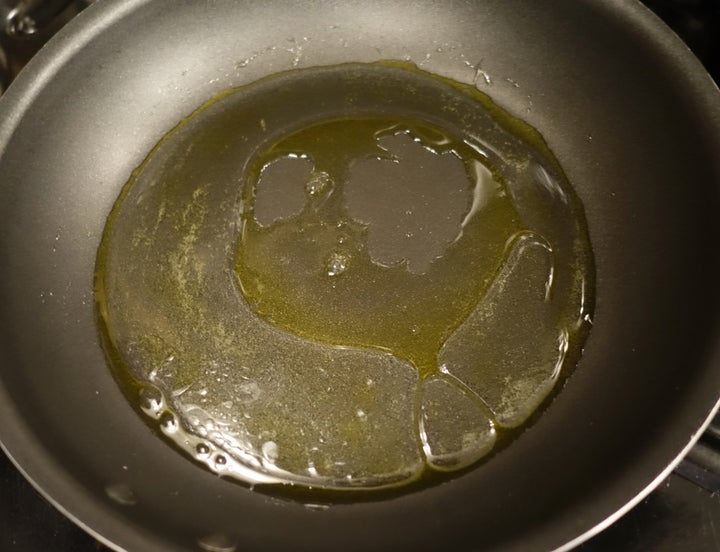
Some water, some olive oil in a non-stick skillet
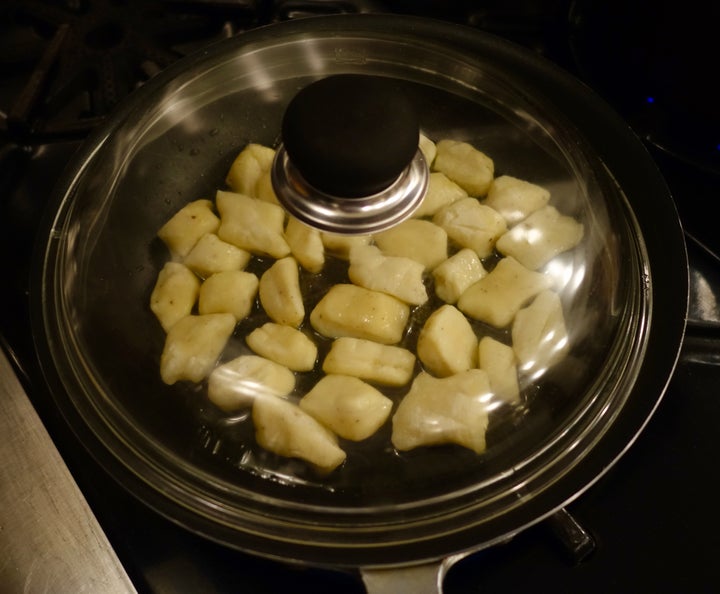
Covered, the frozen gnocchi will heat through in steam before they start to brown
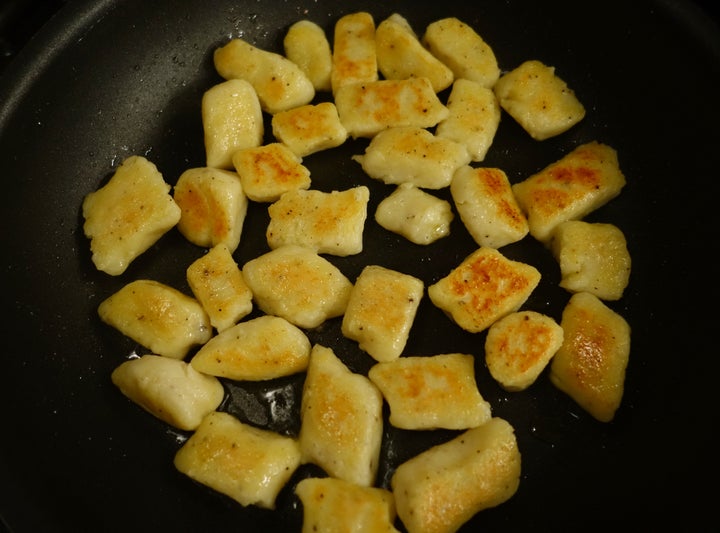
With the water evaporated, the gnocchi fry in olive oil
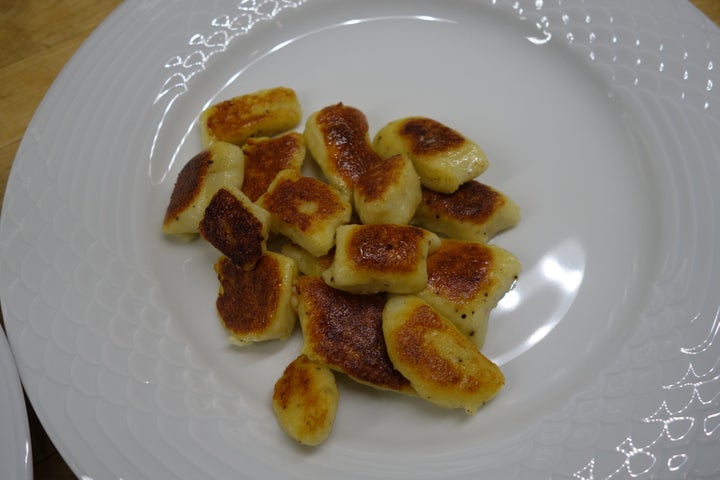
Browned gnocchi waiting for the rest of dinner
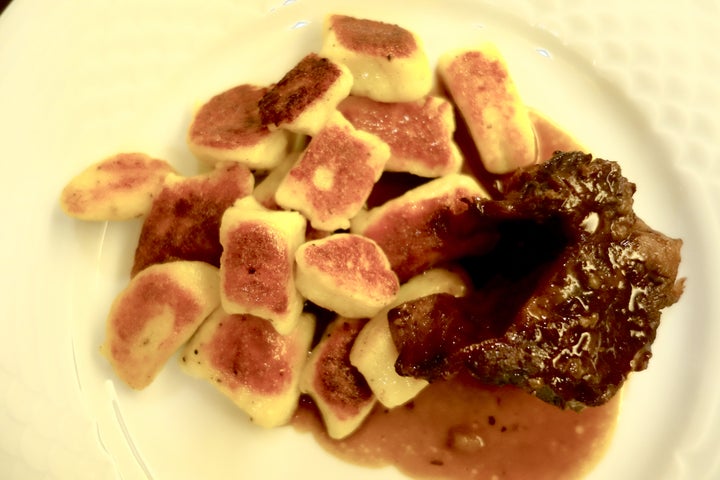
With braised short ribs and their sauce
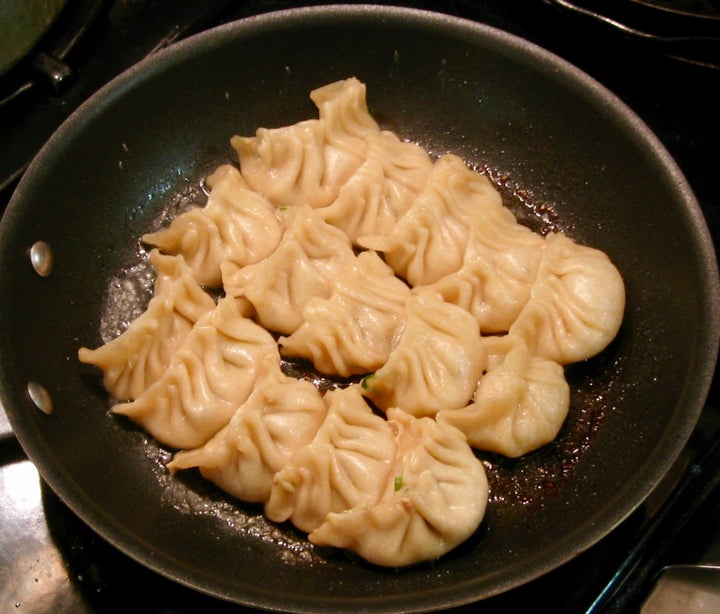
Classic Chinese potstickers - guotie: the source of the technique
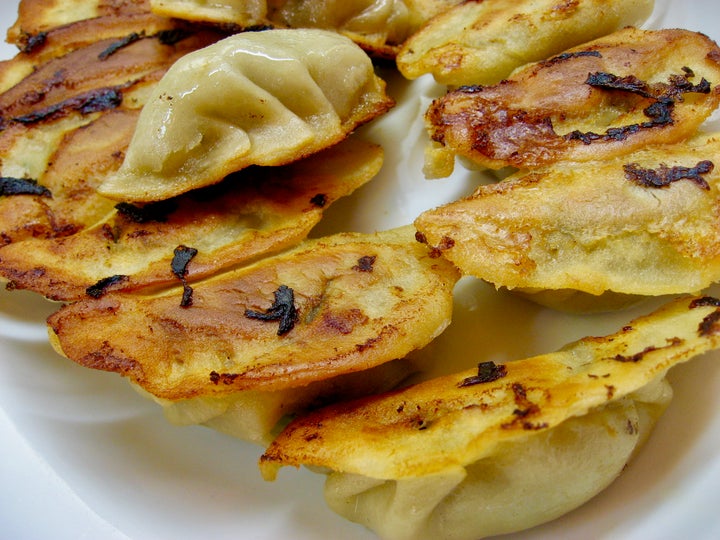
Potstickers: crunchy
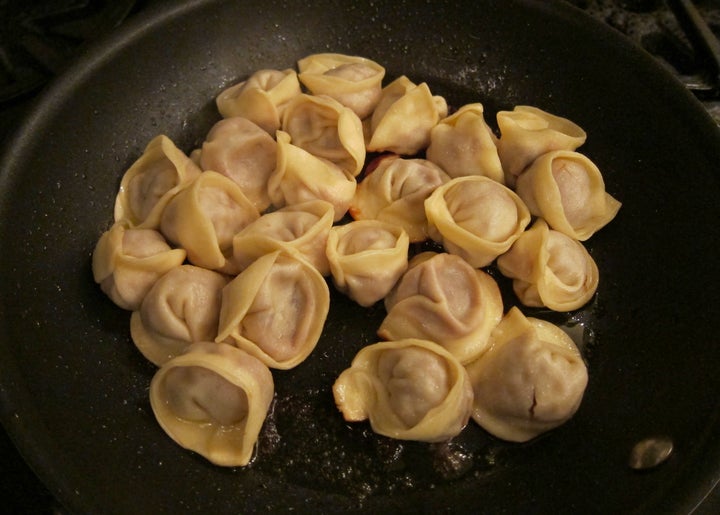
The same approach used for plump tortelli
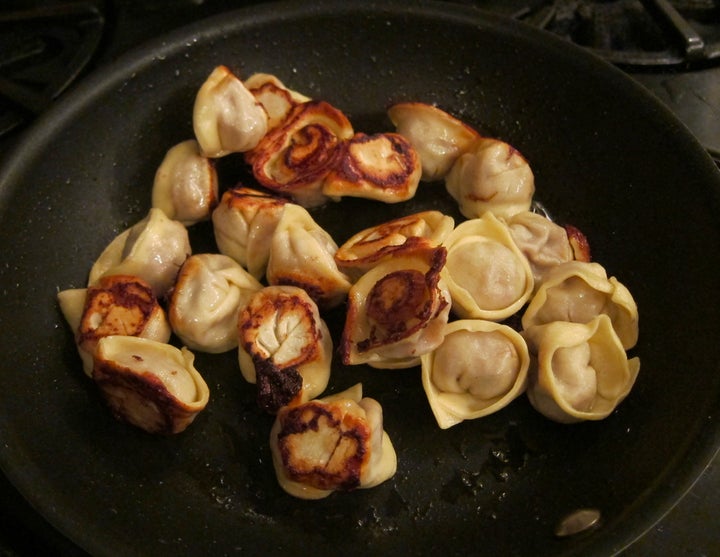
Those tortelli